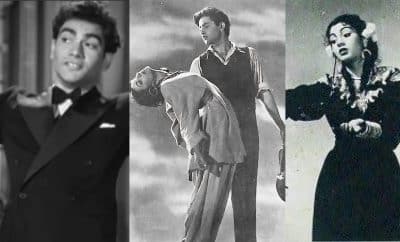Legends
Hindi Film Industry’s Blue-eyed Boy – Raj Kapoor
He gifted stars like Nimmi, Dimple Kapadia, Rishi Kapoor, Padmini Kolhapure and Mandakini to the film industry. He had the capacity to assemble talents like writer K A Abbas, lyricists Shailendra and Hasrat Jaipuri, music maestros Shanker-Jaikishan, singer Mukesh and numerous actors and make them work at their optimum. A romantic actor, advocate of universal love, saviour of social changes his was a glorious chapter in the cinematic history of Hindi cinema. Raj Kapoor is undoubtedly Hindi film industry’s blue eyed boy.
Born Ranbir Raj Kapoor on December 14, 1924, in Peshawar to thespian Prithviraj Kapoor and his wife Rama Kapoor. He was the eldest of six children in the family. At the age of ten, he appeared in films for the first time in Inquilab (1935). Drawn towards cinema, he started working as an assistant on the sets of Dilip Kumar’s first film, Bombay Talkies’ Jwar Bhatta. After a few immaterial roles and even as a clapper boy, Raj Kapoor got his break as the main lead in 1947, in Kidar Sharma’s Neel Kamal opposite Madhubala. An exceptionally talented boy, Raj Kapoor, started multi-tasking from the age of 24 when he produced, directed and acted in Aag (1948). He established his own studio, RK Films, becoming the youngest film director of his time.
His next directorial venture Barsaat won him recognition and connected him directly with the audiences. His knack for romance, fascinating and psychologically adept way of showing human emotions and his ability to see and empathise with each character’s emotional viewpoint spoke volumes about his sensitivity as a director.
He went on to produce and star in several hit films made under his R.K. Banner including Awaara (1951), Shree 420 (1955), Chori Chori (1956), Jagte Raho (1956) and Jis Desh Men Ganga Behti Hai (1960), the last was directed by Radhu Karmakar, his longtime cinematographer, and which won Filmfare Award for Best Film.These films established his screen image modeled on Charlie Chaplin’s most famous screen persona of The Tramp. His other notable films outside his production house as a leading actor included Anhonee (1952), Aah (1953), Anari (1959),Chhalia (1960) and Dil Hi To Hai (1963).
After the debacle of his ambitious project Mera Naam Joker, without losing heart he defiantly made Bobby (1973) with two newcomers, Rishi Kapoor and Dimple Kapadia. It charmed the young audiences with its vivacity and beauty of visuals. This was followed by Satyam Shivam Sundaram and sensitivity galore Prem Rog while Ram Teri Ganga Maili symbolised purity.
He succumbed to an asthma attack while still working for the script of Henna, which was later completed by his eldest son Randhir Kapoor, Raj Kapoor kept in tune with the essence of his life,the show must go on.
Our tribute to the showman of Hindi screen!!



